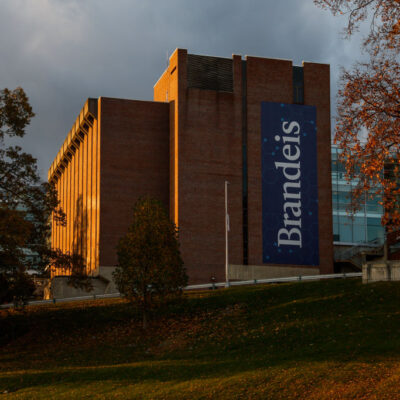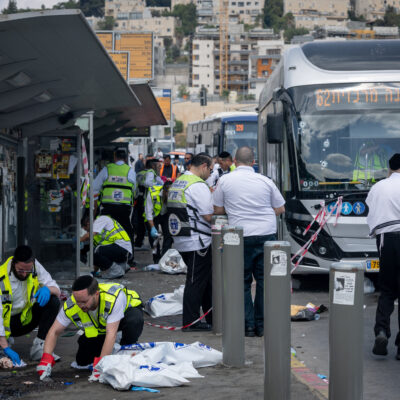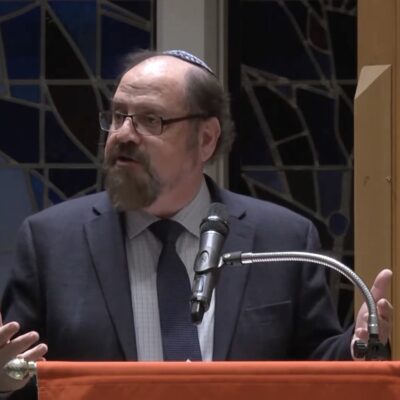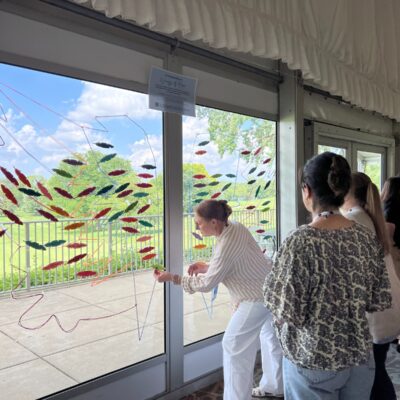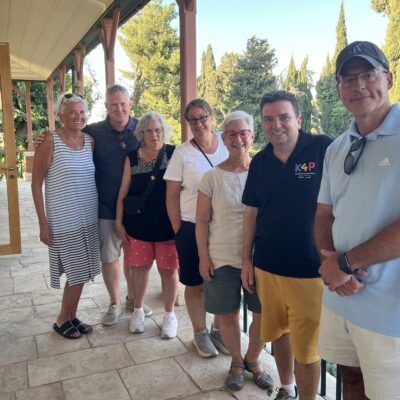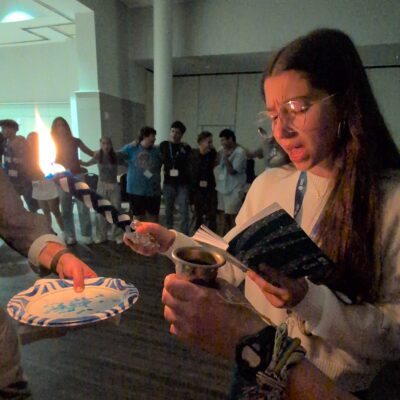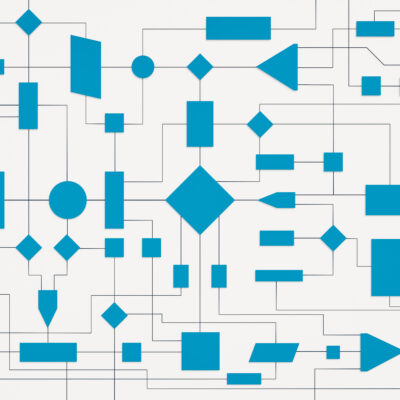Opinion
TAKING THE LEAD
Educating the educators: A trip to Israel for public school teachers
Throughout my life, I really and truly never experienced antisemitism. I met people who had never met a Jew, but these individuals were more curious than confrontational. When one of my children encountered antisemitism, the pastor from a local mega-church used the opportunity to invite me to his community in order to tell his parishioners that Jesus was born a Jew.
The world has changed.
About a year ago, a congregant called to tell me that her child walked into her social studies class and the world clocks were set to highlight “major capitals”: Tokyo, London and Gaza City. Gaza City? Later that week during a geography lesson, the same teacher invited the only Jewish child in the class to identify Palestine on the map.
Sadly, this was not an isolated incident. There is a not-so-subtle rise in antisemitism in our local public schools in Massachusetts. Last February, The Free Press published an article that summarized much of what has been happening among some of the educational leadership in the Bay State, outlining rampant and ubiquitous antisemitism making its way into the state with the largest teachers union in New England. The situation is serious enough that a special commission on combating antisemitism was established by the Massachusetts state legislature.
I repeatedly asked myself what my role as a community rabbi should be in combating antisemitism by ensuring that school teachers better understand the nature of the Israeli-Palestinian relationship, the conflict and its realities. Last winter, I reached out to a high school principal and local funders with an idea; and in July, the idea became a reality.
Thanks to the generosity of the Jewish Federation of Western Massachusetts, the Harold Grinspoon Foundation and the Jewish Endowment Foundation of Western Massachusetts’ Lynn and William Foggle 50th Anniversary Fund for Israel Study, as well as the insight and fortitude of local teachers and administrators, I took local public school educators — only one of whom was Jewish — to Israel.
This educational mission had three principal aims.
First, to help participants appreciate the Jewish people’s historic attachment to the land of Israel and to encounter what that means in the present day. Jerusalem’s Old City, the City of David, Hezekiah’s Water Tunnel and Southern Wall excavations provided ready material to demonstrate the Jewish presence in Israel over three millennia. Lest anyone think of Jerusalem as home to Jews only, we explored vital sites for Christians and Muslims in order to show how the city is sacred for the three Abrahamic faiths (and complicated for them all). While there is nothing quite like July in the Judean Desert for heat stroke, seeing the formidable desert fortress of Masada and the excavations of Qumran, where the Dead Sea scrolls were found, gave us plenty to examine and discuss — the sites, stories of the Jewish People across history, and the contemporary realities of local residents of the landscape from religious Zionists to Bedouin to Palestinians.
A second goal of this trip was for the group to bear witness to the atrocities of Oct. 7, 2023. We met a survivor of the Nova music festival who shared her story and opened the group’s eyes and hearts to understand, first hand, the events of that fateful morning. We visited Kibbutz Kfar Azza, hearing testimonies from both kibbutz residents and IDF soldiers who survived the Oct. 7 attacks. A lunch stop in Sderot, a small town just one mile from the Gaza Strip, demonstrated the region’s proximity to danger, as well as Israel’s resilience and fortitude.
The purpose of this day was to ensure that our group gained a deeper appreciation of just how horrific the Oct. 7 attacks were and how the pain of the current war pulsates throughout the country, far beyond the Gaza Envelope. To that end, we also visited Hostages’ Square, located in the plaza of the Tel Aviv Art Museum. We tried hard to ensure that the educators understood the trauma that Israelis are feeling, with 50 hostages still in Gaza and a war that seems to have no end in sight.
The final goal of the trip was to explore Israel. I wanted to make sure the educators encountered the many facets of Israeli society. We attended a Kabbalat Shabbat service at the Tel Aviv Port. We studied modern Israeli poetry with a scholar who works with Jews, Christians and Muslims and incorporates teachings from sources across the political spectrum to highlight a range of ideas. And everywhere we went, we spent time speaking with the locals — those who we met intentionally or by chance along the way. While the bricks and mortar sites of Israel, from the ancient to the modern, are always interesting, it was by encountering people and their stories that participants were truly touched. I’ve led enough trips to know that meaningful encounters with people are the most enduring for our hearts and souls; so our group ultimately focused the most on understanding what it is like to live in Israel — as a Jew, as a Palestinian, as an Arab Israeli.
At the conclusion of the trip, I asked the participants to share some of their reflections. One teacher wrote:
“This trip didn’t leave me with neat answers, but it gave a fuller picture. I carry the images, the stories and the questions with me, and they now help me to shape how I listen, how I will teach and how I try to hold more understanding in conversations that are often simplified.”
Another teacher wrote:
“This trip gave me a far better understanding of the history, religion, culture and complexities of Israel. I am going to bring this experience back to my school and my community and try to pass on the lessons I learned there.”
I very much hope that this trip can serve as a model for other communities; I would be only too happy to help advise, brainstorm and discuss with any interested parties. The trip was a success for so many reasons. The teachers had a chance to make strong connections with one another, with their faith, with their humanity and with the people and places we touched. The trip enabled teachers to better understand the Israeli-Palestinian conflict and equipped them to facilitate meaningful conversations; they no longer rely on others to digest the news. Most importantly, these teachers are better equipped to go into the classroom and work with their students to examine material and do what this era demands: to think critically.
Rabbi Amy S. Wallk is the rabbi of Temple Beth El in Springfield, Mass.

